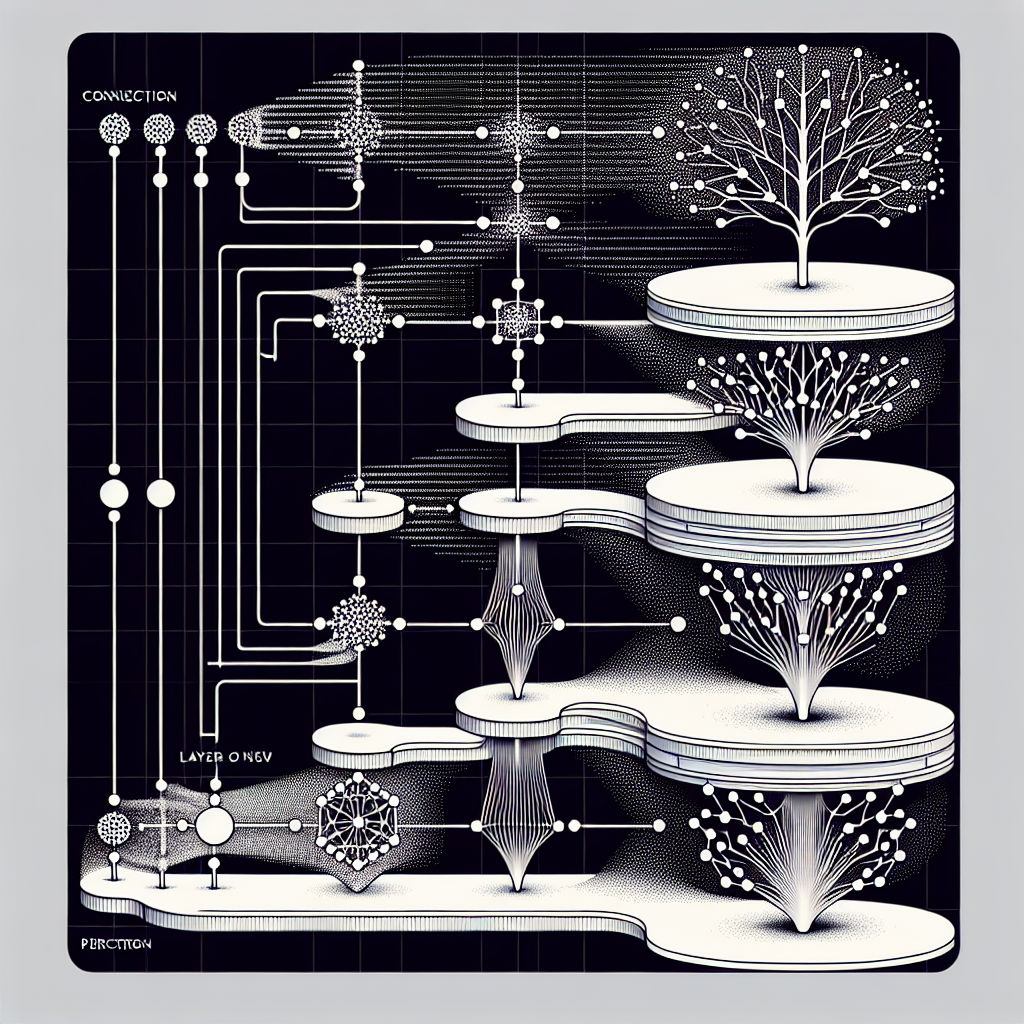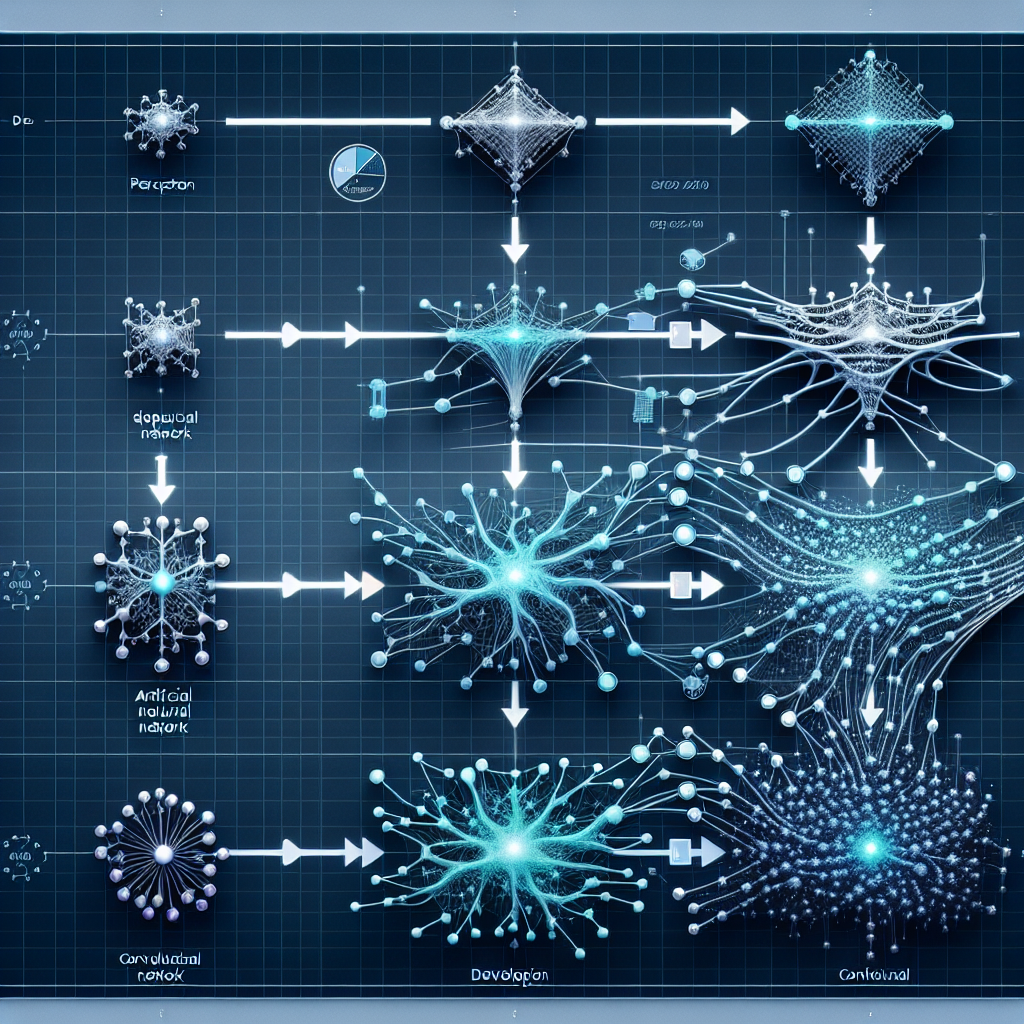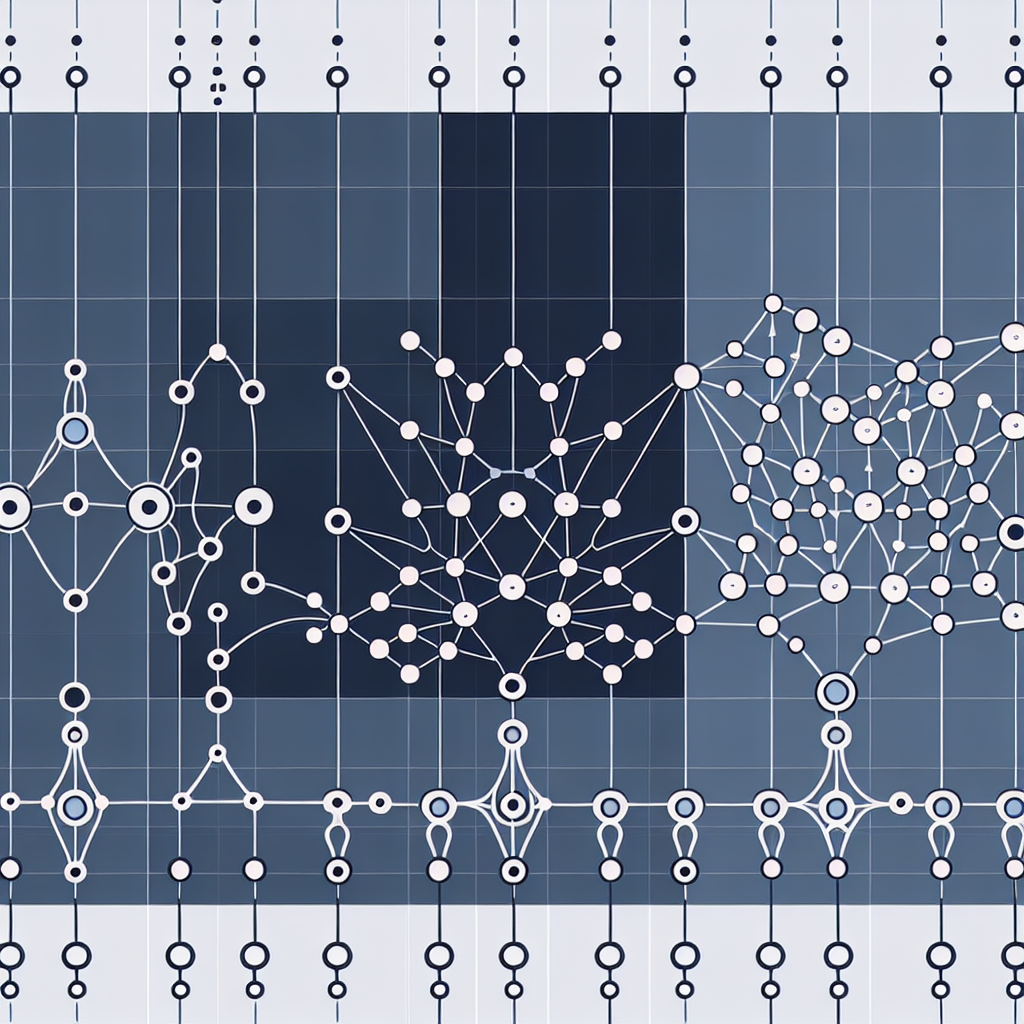Your cart is currently empty!
Tag: Perceptrons

The Evolution of DNN: From Perceptrons to Deep Learning
Deep Neural Networks (DNNs) have come a long way since the early days of artificial intelligence research. The roots of DNNs can be traced back to the concept of perceptrons, which were introduced in the 1950s by Frank Rosenblatt. Perceptrons were simple models of a single neuron that could make binary decisions based on input data.Over the years, researchers continued to develop more complex neural network architectures, such as multi-layer perceptrons and convolutional neural networks. These advancements allowed for more sophisticated learning algorithms and the ability to process more complex data, such as images and natural language.
One of the key breakthroughs in the evolution of DNNs was the development of backpropagation in the 1980s. Backpropagation is a method for training neural networks by adjusting the weights of connections between neurons in order to minimize the error in the network’s output. This allowed for more efficient learning and better performance of neural networks.
In the early 2000s, the concept of deep learning emerged as researchers began to explore neural networks with many layers. These deep neural networks were able to learn complex patterns in data and achieve state-of-the-art performance on tasks such as image recognition and speech recognition.
Today, deep learning has become a dominant force in artificial intelligence research and has led to breakthroughs in a wide range of applications, including autonomous driving, natural language processing, and medical imaging. The growing availability of large datasets and powerful computing resources has fueled the rapid advancement of deep learning technology.
One of the most popular deep learning architectures is the deep convolutional neural network (CNN), which has revolutionized computer vision tasks. CNNs are able to automatically learn features from raw pixel data and have been used to achieve human-level performance on tasks such as image classification and object detection.
In recent years, researchers have also made significant progress in the field of recurrent neural networks (RNNs) and long short-term memory (LSTM) networks, which are particularly well-suited for sequential data such as text and speech. These networks have been used to build powerful language models and achieve impressive results in machine translation and speech recognition.
The evolution of DNNs from simple perceptrons to deep learning has been driven by a combination of theoretical advances, algorithmic improvements, and the availability of large-scale datasets. As deep learning continues to advance, we can expect to see even more breakthroughs in artificial intelligence research and applications in the years to come.
#Evolution #DNN #Perceptrons #Deep #Learning,dnn
The Evolution of Deep Neural Networks: From Perceptrons to Convolutional Networks
The Evolution of Deep Neural Networks: From Perceptrons to Convolutional NetworksDeep neural networks have become one of the most powerful tools in the field of artificial intelligence, revolutionizing industries such as healthcare, finance, and technology. But how did we get here? The evolution of deep neural networks can be traced back to the humble beginnings of the perceptron, a basic neural network model developed in the 1950s.
The perceptron was inspired by the way the human brain processes information, with interconnected nodes (neurons) that pass signals to each other. The perceptron was a simple model with an input layer, an output layer, and a single layer of computational units (neurons) in between. It was capable of learning simple patterns, but struggled with more complex tasks.
In the 1980s, researchers introduced the concept of multi-layer perceptrons, which added additional layers of neurons to the network. This allowed for more complex patterns to be learned, but training these networks was challenging due to the “vanishing gradient” problem, where the gradients used to update the weights of the network became very small in deeper layers.
The breakthrough came in the late 1990s with the introduction of convolutional neural networks (CNNs). CNNs are a type of deep neural network that is specifically designed for processing visual data, such as images. They use a technique called convolution, which allows the network to focus on small, local features in the data, making them more efficient and effective at image recognition tasks.
CNNs have since become the go-to model for many computer vision tasks, such as object detection, image classification, and facial recognition. They have also been successfully applied to other domains, such as natural language processing and speech recognition.
In recent years, researchers have continued to push the boundaries of deep neural networks with the development of even more advanced models, such as recurrent neural networks (RNNs) and transformer networks. These models have further improved the performance of deep learning systems, enabling them to tackle even more complex tasks with higher accuracy.
The evolution of deep neural networks has been a journey of continuous innovation and improvement, driven by the quest to create more intelligent and capable artificial intelligence systems. As we look towards the future, it is clear that deep neural networks will continue to play a crucial role in shaping the next generation of AI technology.
#Evolution #Deep #Neural #Networks #Perceptrons #Convolutional #Networks,dnn
The Evolution of Deep Neural Networks: From Perceptrons to Today
Deep neural networks have come a long way since their inception, evolving from simple perceptrons to the complex and powerful models we see today. The journey of deep neural networks has been marked by significant advancements in technology, algorithms, and understanding of neural networks.The concept of neural networks dates back to the 1940s, with the development of the perceptron by Frank Rosenblatt in 1957. The perceptron was a single-layer neural network that could only solve linearly separable problems. While the perceptron was a groundbreaking development in artificial intelligence, its limitations quickly became apparent when it failed to solve more complex problems.
The limitations of the perceptron led to the development of multi-layer neural networks, also known as deep neural networks. The idea of deep neural networks had been around since the 1960s, but it wasn’t until the 1980s that significant progress was made in training deep neural networks. The introduction of backpropagation, a method for training neural networks by adjusting the weights of the connections between neurons, was a key breakthrough that allowed for the training of deep neural networks.
In the 2000s, deep neural networks saw a resurgence in popularity with the development of deep learning algorithms such as convolutional neural networks (CNNs) and recurrent neural networks (RNNs). CNNs revolutionized image recognition tasks by learning hierarchical features from raw pixel data, while RNNs were able to model sequential data such as text and speech.
The introduction of deep learning frameworks such as TensorFlow and PyTorch in the 2010s made it easier for researchers and developers to build and train deep neural networks. These frameworks provided powerful tools for implementing complex neural network architectures and optimizing them for performance.
Today, deep neural networks are used in a wide range of applications, from image and speech recognition to natural language processing and autonomous vehicles. The evolution of deep neural networks has been driven by advances in hardware, algorithms, and data availability, as well as a deeper understanding of neural network architectures and training techniques.
As we look to the future, the evolution of deep neural networks is likely to continue as researchers explore new architectures, algorithms, and applications for these powerful models. With ongoing advancements in technology and research, deep neural networks are poised to revolutionize the field of artificial intelligence and drive innovation in a wide range of industries.
#Evolution #Deep #Neural #Networks #Perceptrons #Today,dnn
